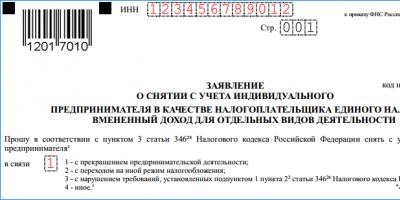When connecting and installing an LED strip, many people are put off by the need to solder it.
For example, this can be encountered when the tape needs to be shortened, cut, rotated, and then connected to the contact pads. Or simply connect it with wires to a power supply or controller.
People think that only professional radio amateurs and electronics engineers can do this correctly. Therefore, they prefer to buy some connectors or connecting wires for connection. 
However, only soldering can make a truly high-quality connection in LED strips.
Disadvantages of connecting connectors
When using a connector, the contact on the tape and the contact on the connector have a fairly small contact area after snapping into place. What does this ultimately reflect? 
Due to the reduction in area, heating occurs. Firstly, this affects the LEDs themselves located near the connection point. They begin to degrade and lose brightness faster than the rest of their “brothers” in the backlight. 
And secondly, copper without soldering and tinning tends to first darken and then oxidize, forming a greenish coating. That is, oxides are formed that do not conduct electric current. This is typical even for not very small contacts on switches with high currents. 
If your contact heats up, the oxidation process will occur much faster and more intensely. Eventually normal contact simply disappears. The LED strip begins to blink spontaneously, go out, etc.
Even if you provide a sufficient contact area, but do not protect the contacts in any way, oxidation processes will still occur sooner or later. 
Therefore, soldering is the most reliable and durable way to connect and connect LED strips. 
Tools and materials for soldering
This process is not at all complicated; it is enough to have the necessary materials and follow a few basic rules.
Here's everything you'll need:







Briefly, the entire process should look like this:
1 Prepare the soldering iron2 Dip in rosin
3 Dip into solder
4 Back to rosin
5 Soldering wires and tape
And now all this in more detail and with certain nuances.
Soldering wires to tape
So, you have a tape and contact points on it where you should solder the wires. 
First of all, find the marking which contact is “positive” and which is “negative”.
On RGB options there will be one common plus (+12V) and three minuses (R-G-B). This is important in the future for maintaining polarity and supplying power from the unit. 
Strip the ends of the wires from insulation. It is advisable to take multi-colored cores so as not to be confused with the polarity in the future. 
Heat up the soldering iron, touch the solder and lower the core into the rosin. 
After which, when pulling out the core, immediately bring the soldering iron tip with tin to it.
The tinning process should happen automatically. Do the procedure a couple of times to completely cover the copper core on all sides. 
Now you need to tin the contact points on the LED strip. This is best done using flux.
Before doing this, do not forget to thoroughly clean the soldering iron tip. 
Dip it in rosin and clean off all excess. This can be done with a special sponge, a simple knife if the carbon deposits are completely ingrained, or use a metal sponge.
The main thing is to prevent any foreign elements from getting onto the contact pad.
Next, take a very small amount of flux on the tip of a toothpick and apply it to the LED strip. 
Then touch the solder with a heated soldering iron and apply its tip for 1-2 seconds to the soldering points on the tape. 
It is important that the soldering iron is low-power, with a heating temperature of no more than 250 degrees.
What if you don't have a regulator? How to determine the heating temperature?

- when dipping in rosin, the latter should not boil

The maximum allowable time for applying the tip to the LED strip is no more than 5 seconds. When using flux, this happens much faster, 1-2 seconds.
As a result, you should end up with two tin tubercles, in which you will then need to “drown” the connecting wires. 
Before directly soldering the wires themselves, try on their ends.
They must be stripped exactly along the length of the soldering areas. Usually this is no more than 2mm.
If the bare ends are long enough, then when bent they can easily short out each other. Therefore, always bite off the excess, leaving the tip as short as possible. 
Touch the tip of the tubercle on the contact of the LED strip with this tip and apply a soldering iron on top for 1 second. The tin melts and the wire sinks, as if drowning in it. Do the same with the second wire. 
As a result, you should end up with a fairly large contact area. But most importantly, this place is covered on all sides with a tin “cushion”, which reliably protects the contacts from oxidation.
For even greater strength, the soldering area can be filled with hot glue and heat shrink applied on top. Then the wires will not fall off even with constant bending. 
Soldering silicone coated tape
If the LED strip is completely covered with silicone, there is nothing tricky about soldering it either.
Simply, carefully clean off the silicone from the soldering points with a utility knife, and follow the entire procedure described above. 
Silicone here plays the role of additional insulation of LEDs from external conditions. 
If you have a tape with IP68 protection, then after all the work with the soldering iron, you will have to reseal the end with the wires.
To do this, you need to try to push the LED strip back into the protective shell and fill the entire space in this place with silicone. 
Filling depth is at least 10mm. Then install the plug, also pre-lubricated inside with silicone. The wires are passed through the holes in the plug. 
Overlapping connection without wires
To solder two overlapped strips, one of its ends must be tinned on both sides. To do this, carefully remove the double-sided tape from the back side and use a knife to clean the layer of glue. 
After this, you place one piece (the one that was treated on both sides) on the other (tinned only on top). 
Align the contacts with each other and heat the top strip with a soldering iron so that the solder melts on the bottom too. 
True, such a connection is not considered particularly reliable, so it is better to use traditional wires for this purpose.

If you have a long LED strip (up to 5 meters), then it is advisable to solder the power wires to it on both sides. This will ensure that all LEDs glow evenly.
Soldering wires at an angle
What is the best way to solder wires to an extended LED backlight consisting of several parallel sections?
Typically, for such a connection there is a common power bus (wires with a cross-section of 1.5 mm2), and separate pieces of tape that need to be soldered and connected to this bus. 
In this case, it is best to solder the wires to separate pieces at an angle of 90 degrees. 
And so as not to put one wire on top of another 
The “plus” connection can be made not in the same contact place as the “minus”, but in the next section of the module. 
This will not affect the glow of the LEDs in any way.
LED RGB strip
If you have an RGB LED strip, then you probably noticed that its solder contacts are quite close to each other. 
Therefore, when soldering such a backlight, be sure to check that the pads do not short out with a tin track. 
If this does happen, and you didn’t notice it, then the minimum that will happen is that the colors will get mixed up, or some of them will disappear.
But if the positive contact and any of the minuses close, this can lead to failure of the power supply or the tape itself. 
What to do if the pads are still covered with solder? To fix this, bring the tip of the soldering iron again to the pads, heat the tin and run an ordinary toothpick between the contacts.
The soldering process for RGB is the same as for a simple single-color LED strip. Apply flux (4 drops). 
Create tin "pads". 
After that, you recess the wires inside one by one. 
To make a branch from 4 or even 5 (RGBW) contacts to the side, and at the same time not interfere with the connection of the second piece of tape, solder only one contact on each module.
Or solder all 4 wires not at the very end, but on the penultimate module. 
The tape will still glow properly, no matter where the soldering is.
Thus, having a normal soldering iron, solder and good flux, any beginner can learn how to solder an LED strip. 
When are connectors needed?
Of course, installation with connectors is much faster and does not require special tools. 
But if you are making LED ceiling lighting for yourself and for many years to come, then losing an extra 10-15 minutes during installation will pay off in the future with a couple of extra years of reliable operation.
However, it is still not worth completely abolishing connecting connectors. If you are assembling some kind of lighting of a complex design, especially high under the ceiling, then you cannot do without them. 
Soldering in such places is not only inconvenient, but can also result in accidental damage to the ceiling covering. Yes, and soldering by weight is still a pleasure.
When you move the soldering iron from bottom to top, a drop of solder does not always stick. It is imperative to wear safety glasses when doing this type of work.
Therefore, with complex designs, it is certainly better to opt for connectors.

It will be easier to rearrange the backlight segments and change the configuration.
When installing an LED strip, one of the issues that needs to be resolved is how to connect the wires to it. One method is soldering. Despite the complexity of this method compared to connecting with connectors, it is characterized by increased reliability and is the most common connection method.
LED strip device
LED strip is a printed circuit board in the form of a flexible strip. It has two (in RGB color tapes there are four) conductive strips, between which there are LEDs, and can be sealed (coated with a layer of silicone to protect against moisture).
The strip can be cut into sections of three LEDs. The incision sites are indicated by a dotted line or a scissors pattern. In these places on the conductive strips there are contact pads for soldering.
These strips use 12 volt power and are used for backlighting instrument panels, modding system units, repairing LCD screens and other purposes.
Using a converter that increases the voltage, they can be connected to a battery or the USB output of a computer.
What you need for soldering
Soldering LED stripsIn order to solder the conductors to the LED strip you need:
- wires;
- soldering iron;
- tin-lead solder (POS) with a melting point of 183 - 265 degrees;
- heat shrink tube with a diameter of 12 mm;
- rosin or other neutral flux.
The wires must be soft. Rigid stranded wires can break away from the solder joint and damage the pad. This will lead to the fact that you will have to cut off the damaged area and start soldering everything again. Therefore, the cross-section should be no more than 0.35 - 0.5 mm2. If a thick conductor is needed, then it is connected to a thin one, 10–15 cm long, by twisting or soldering.
A soldering iron is needed with a power of 15 - 25 W. A powerful soldering iron can overheat the soldering area, and the contact pad will peel off from the base.
Heat shrink tubing is needed to secure the conductors. After cooling, it presses the wires to the base, becomes rigid and strengthens the connection point.
Rosin can be in the form of a piece or an alcohol solution. The rosin solution is applied with a brush.

Expert opinion
Alexey Bartosh
Ask a question to an expertAttention! Do not use acid! This may cause corrosion and damage to wires, conductive strips, or short circuits.
Preliminary work
Before soldering wires to the LED strip, you need to:
- cut a piece of the LED strip to the required length;
- if the conductors are of too large a cross-section or have already been laid, then sections of a smaller cross-section are additionally needed;
- cut pieces of heat shrink tube 1.5 - 2 cm long;
- If the LED strip is covered with a layer of silicone, then it must be removed above the contact pads. This can be done with a sharp knife.
Soldering process
Soldering wires to a strip with LEDs is carried out in several stages:
- clean contact pads;
- tin them;
- cut the wires to the required length;
- strip the ends to a length of 5 mm and tin them;
- sequentially solder each conductor to the current-carrying strips;
- put on a piece of heat-shrink tubing so as to cover the soldering area, but leave the LED closest to it open;
- warm up the tube with a hairdryer.
Soldering silicone coated tape
 LED strip coated with silicone
LED strip coated with silicone If the LED strip is covered with a layer of silicone, it must be removed with a sharp knife.
In this case, care must be taken not to damage the current-carrying strips.
Soldering wires at an angle
If you need to connect the conductors to the LED strip from the side, at a right angle, then the tinned ends must be bent. One of the wires does not need to be bent, but soldered to the side.
Attention! You cannot bend soldered wires - they can become stiffer due to impregnation with rosin and solder and damage the tape when bending.
Connecting two strip sections to each other at an angle is done in the same way, only the conductors must be taken of different lengths - 1 and 3 cm.
Methods for connecting two pieces of LED strip
There are three ways to connect two sections of LED strip together.
Connecting strips with a soldering iron without wires
In this case it is necessary:
- if necessary, clean the contact pads of those ends that need to be soldered together;
- tin the cleared areas;
- fix the tinned ends so that the strip looks like a whole;
- apply a sufficient amount of solder with a soldering iron and connect the current-carrying strips to each other;
- cut a piece of heat-shrink tubing of such length that it covers the connection point, but leaves the LEDs open;
- put a piece of heat-shrinkable tubing over the joint and heat it with a hairdryer.
Connection with wires
The connection of two segments is carried out in the same way as the connection to the tape, only the wires are cut 2 - 3 cm long.
We solder in the wrong place of the cut
If the strip was cut incorrectly, it can be soldered again. This is done in the same way as when soldering two separate pieces of tape together.
LED strip repair
In the strip, the LEDs are collected in groups of three. If one of the LEDs fails, then this section must also be replaced. To do this, the damaged piece is cut out, and another one from the same strip is inserted in its place.
If it is difficult to solder these areas, then connecting connectors are used.
Connection methods: soldering and connector
There are two types with each other and with a cable:
- soldering;
- connectors.
Solder connection
When connecting wires by soldering, they are soldered with tin-lead solder. Conductors with a cross section of up to 0.5 mm2 are used.
Connection with connectors
In addition to soldering, connections are made using connectors. This is a modern way of connecting.
Types of connecting connectors
Connectors are available in different types, for all installation cases:
- With wires. These devices are used to connect wires to the LED strip.
- Connecting. They are used to connect two sections of the LED strip to each other.
- Angular and T-shaped. Designed for connection at an angle or in the form of the letter “T”, respectively.
All types of connectors are available both for monochrome tapes, with two contacts, and for RGB tapes, with four.
Each method has advantages and disadvantages.
Pros and cons of soldering
Provides reliable contact that does not oxidize or heat up.
However, a solder joint has lower mechanical strength. This problem is partially solved by using heat shrink tubing.
Soldering is a longer process than connecting using connectors, and when performing a large number of operations, it will take a lot of time.
In addition, it is convenient to solder on a table, but if you need to connect or repair the tape under a cabinet or in a ceiling plinth, this may not be possible.
Pros and cons of connector connection
Connecting using connectors has advantages - it is fast, convenient, and such connections have mechanical strength.
There is only one drawback - the connection point may oxidize, especially in damp rooms, or overheat. In this case, the contact will disappear and the LEDs will go out. Therefore, a soldered contact is more reliable than a connector contact.
Soldering errors
 Errors in soldering LED strips
Errors in soldering LED strips During the soldering process, errors are possible that affect the result:
- using acid instead of rosin can lead to destruction of conductors, current-carrying strips or a short circuit;
- soldering iron with a power of more than 25 W - overheating of the contact pads and peeling off from the base with subsequent breakage is possible;
- wires with a cross-section of more than 0.5 mm2 or rigid (or single-core) can come off the solder or break the current-carrying strip.
There are many videos on the Internet about how to solder an LED strip with your own hands.

Expert opinion
Alexey Bartosh
Specialist in repair and maintenance of electrical equipment and industrial electronics.
Ask a question to an expertIf all operations are performed correctly, soldering the wires will ensure reliable contact and operation of the LED strip.
📋 Take the test and test your knowledge

Can purchased LED lamps be repaired? This question, taking into account the high cost of lamps, is quite relevant; a lot has already been written about this on Internet forums. The most frequently discussed issues are the repair of lamps purchased on Aliexpress.
The article, among other things, talked about the purchase of LED lamps, which have become so popular recently. Actually, the article began with these lamps: the quality of these lamps left much to be desired, mainly attracted by the low price. But in some places where too much illumination is not required, these lamps came in handy.
Upon further use, it turned out that these lamps are not as durable as promised in the advertisement. If the author of the article’s “Navigator” brand lamps have been working flawlessly for almost two years, then the lamps purchased on Aliexpress fail in a month or two, or even earlier. An indicative case is when a lamp replaced in the evening simply did not turn on the next day. As a result, two faulty identical lamps.
Someone else would simply throw away the unusable lamp, but not a radio amateur. Therefore, radio amateurs first try to find out the scale of the disaster, and, if possible, eliminate the defect. So it was this time. It’s not that Chinese lamps are too expensive, but if you can restore it, you won’t have to buy another lamp. As they say, the savings are obvious.
The appearance of these lamps is shown in the figure.
This picture is taken from the Aliexpress website. Apparently, the sellers assumed that someone would disassemble and repair such lamps, and, as they say, repairs are not far off. A larger board is shown in the figure below. From the inscription on the board it is easy to understand that the lamp is assembled from 34 LEDs of standard size SMD2835 (2.8 * 3.5 mm).

Disassembling the lamp revealed that there is a small power supply board inside. Only visible in the photo; all other parts are made by SMD mounting and are located on the back side of the board.

The circuit assembled on the board is shown in the figure below. It’s impossible to think of anything simpler: a regular transformerless power supply with a quenching capacitor.

The purpose of the parts is clear: resistors R1, R3 discharge the capacitors after disconnecting from the network. This is done so that there is no electric shock when you touch these capacitors with your hands. Regarding capacitor C1, everything is clear. If you unscrew the lamp from the socket, touching the base may not be very pleasant. It all depends on how much charge remains on capacitor C1.
The charge on the electrolytic capacitor can only remain if at least one LED breaks. This charge can only be “touched” by disassembling the lamp. Although resistor R3 has another purpose.
If the LED chain (at least one LED) burns out, the voltage on the electrolytic capacitor remains at a level not exceeding the operating voltage of the electrolytic capacitor.
In the diagram, the operating voltage of the electrolyte is 250V. If we assume that the voltage drop across one LED is 3V, then across 34 LEDs the drop will be 34*3=102V. It turns out something like a parametric voltage stabilizer. Therefore, 250V is theoretically more than enough.
Chinese developers apparently reasoned in a similar way: there are lamps in which the operating voltage of the electrolytic capacitor is only 100V. These are mainly small-sized lamps with a power of 3...5W, where it is difficult to hide a high-voltage capacitor. In the lamp shown in the photo, the operating voltage of the electrolytic capacitor is 400V. But resistor R3, most likely, will not be superfluous.
Resistor R2 is designed to limit the current through the LEDs. But this is only on the diagram. In fact, it is simply not on the printed circuit board inside the lamp. The function of limiting the current through the LED chain is successfully performed by capacitor C1. This is like a variant of the scheme. Maybe other manufacturers still supply this resistor.
So, as was written just above, there were two faulty lamps at once, each with only one LED burned out. Moreover, there were no visible defects in the form of soot on the board, destruction or blackening of the LED itself. Therefore, the faulty one had to be found. This is quite simple to do: the LEDs light up faintly. Naturally, if the multimeter probes are connected in the forward direction.
It was decided to use one lamp for spare parts, remove the LED from it and solder it to another. Attempts to unsolder the LED using a hot air gun were unsuccessful: the LED did not want to be unsoldered.
The fact is that on the back side of the printed circuit board there is an aluminum heatsink, because LEDs, like all semiconductor devices, really do not like high temperatures. But even without a heatsink, the process of soldering parts from a printed circuit board is much more complicated and dramatic than soldering new parts onto the board.

Repairs should begin by searching for a faulty LED if the lamp goes out completely and immediately. If the lamp starts to blink, or just shines dimly, then the fault lies in the power supply. Most often this occurs due to a faulty capacitor C1.
The easiest repair option is to replace capacitor C1 with a known good one. A faulty electrolytic capacitor can almost always be identified by eye by its swollen bottom. This is exactly how modern explosion-proof electrolytes behave.
After detecting a faulty LED, the easiest way to unsolder it is as follows. The first thing to do is remove the yellow elastic filter using a thin screwdriver or needle. Underneath there will be a metal surface with a crystal. Place a piece of solder and a small amount of gel-like flux on this surface. Using a well-heated soldering iron with a power of at least 60...80 W, heat this “sandwich” until the LED is unsoldered from the board.
Some better results can be achieved by using a low-melting alloy, such as Wood's alloy, instead of solder. This alloy in the form of small cakes is sold on radio markets. By mixing with base solder, usually lead-free, Wood's alloy lowers the melting point of lead-free solder. Therefore, the desoldering process becomes easier and faster, and the likelihood of overheating the printed circuit board is significantly reduced.
Another way to unsolder a faulty LED is with thermal tweezers. But not everyone has this tool, and it’s hardly worth buying it for a one-time use. Therefore, it is better to make a U-shaped tip, or use a homemade tip shown in the figure below.

After the faulty LED is sealed off, all that remains is to replace it with a new one. LEDs of standard sizes 2835 or 5730 can be ordered in the same place where the lamps were purchased, on Aliexpress. They are quite inexpensive there, about 50 rubles per hundred pieces.

Judging by the price, these are not the best LEDs, but the lamps were still repaired, and the glow of these LEDs is no worse than those that were originally.
Soldering a new LED onto the board will not be difficult. This can be done with a regular soldering iron. Remains of old lead-free solder should be removed from the board. This is best done using braided wire from shielded wire.
The braid must be impregnated with flux, in the simplest case rosin. Then use a well-heated soldering iron to pass through the braid along the contact pads, the solder will be absorbed into the braid. Then irradiate the board contacts with POS 61 solder or similar.
Now all that remains is to solder the LED installed on the contact pads. The LED contacts must be covered with a layer of flux, preferably gel-like. After this, just touch the ends of the LED with a soldering iron to melt the solder remaining on the board contacts. Soldering occurs so quickly that the finger holding the LED on the board does not feel any increase in temperature.
The installation of electronic circuit components is carried out in different ways. One of the most common options is soldering, which ensures reliable contact and strong attachment of parts to the printed circuit board.
It is not very difficult and is accessible even to novice radio amateurs. Soldering SMD LEDs has different features and rules. They are designed to preserve the elements and protect them from overheating. Failure to comply with the requirements leads to the loss of lamps, so it would be useful to consider the issue in more detail.
The process of soldering SMD LEDs consists of applying a thin layer of solder (a low-melting tin-lead alloy with various additives) simultaneously to the contacts of the attached part and the current-carrying tracks of the printed circuit board. Physical processes used:
- wetting of metals with melt;
- capillary impregnation of small gaps between contacts, ensuring connection both mechanically and electrically.
In order to solder SMD diodes, it is necessary to use a special soldering iron with low power and limit the time of contact of the LED device with the hot working part. Experts recommend not to exceed 3-5 seconds. A common mistake is to use soldering irons with a thin tip. This reduces the efficiency of heat transfer and does not allow high-quality heating of the contacts and traces of the printed circuit board.
Experienced people recommend using a normal tip, ground at an angle. The large mass will ensure rapid heating of the pads and melting of the solder, eliminating overheating of the LED. Liquid solder, under the influence of wetting and capillary absorption effects, flows into the smallest gaps between the element legs and the printed circuit board track, after which the hot soldering iron is removed to the side. The solder hardens and creates a monolithic area of strong connection of parts.
The second error leading to LED failure is overheating. Excessively long contact of the soldering iron with the legs of the LED element leads to an increase in the temperature of the emitting crystal. If you do not constantly control the duration of contact of the tip with the part, it will not be possible to avoid excessive heating.
Factory soldering
In the factory, other soldering technologies are used that allow several boards to be soldered simultaneously. A special robot installs the necessary elements on the base, on the working side of which solder paste is applied using silk-screen printing. It contains solder and flux; when heated, they change phase and perform their tasks. The flux degreases the contacts and provides wetting, and the solder, under the action of capillary effect, flows into the gaps of the connections and ensures a strong connection of the SMD elements.

The process takes place in a special oven, where the board is kept for a certain time. The contact duration and heating mode are selected in such a way as not to harm SMD LEDs. The procedure occurs quite quickly and ensures soldering of elements in industrial quantities.
Important! It will not be possible to repeat this technology at home, since you need to have a full set of equipment and materials. Therefore, it is important for hobbyists to master the process of manual soldering of SMD LEDs using conventional tools and materials.
Required materials and tools
To solder SMD LEDs you will need:
- soldering iron with the necessary parameters;
- side cutters, tweezers, scissors;
- mounting needle or thin awl;
- solder and flux. Regular rosin or a special liquid composition, which is an alcohol solution, will do. An aspirin tablet is often used;
- thin brush for applying liquid flux;
- a magnifying glass on an adjustable stand (bracket), which is used by jewelers;
- soldering gun (component of a soldering station).
In the manufacture of lighting products that use surface-mount LEDs - soldering SMD LEDs is done automatically. Manual soldering of such LEDs may be required in several cases - when repairing devices or when prototyping them during the product design process. Sometimes soldered by hand when starting small-scale production of new products.
In the process of manual and mechanized soldering, the main problem with soldering LEDs to the board– maintain the required temperature conditions and not overheat the LED housings. More precisely, semiconductor materials of a light-emitting crystal react poorly to overheating.
The consequence of crystal overheating can be accelerated degradation of the LED, in which:
- The brightness of the LED decreases;
- the shade of light changes;
- An LED can almost go out or physically burn out from overheating in a matter of weeks or even days.
Procedure for manually soldering SMD LEDs onto a board
If you are repairing a lighting product with SMD LEDs, the procedure will consist of the following steps:
- dismantling a failed LED;
- preparing the soldering area for the new LED;
- installing the LED in place and securing it;
- LED soldering;
- Solder washing and protection.
For dismantling, you can use a regular low-power soldering iron, for example, 25 W. The tip is thinned to 1 - 2 mm and the tip is tinned.
If the solders were covered with protective varnish, then either wash it off or carefully tear off a small part with a scalpel or mounting knife. The cleaned area is quickly heated with a soldering iron tip until the solder melts and “wet” it with a piece of shielding braid removed from the cable. For this purpose, you can twist several thin wires into a “tassel”.
This is how all contacts of the LED housing are soldered and cleaned, and then removed from the board. The contact pads on the board are cleaned from solder residues with a soldering iron. The new LED is installed in its regular place. Wet the contact pads and contacts of the SMD housing with alcohol-rosin flux and solder them.
This must be done quickly so that the permissible soldering temperature of the LEDs is not exceeded.
The resulting soldering must have a smooth, shiny surface and completely cover the contact on the case and the contact pad on the board.
After checking the quality of soldering, they are washed with alcohol to remove flux residues. After which they and the LED housings are protected from external influences by applying a layer of protective varnish. This is how they are soldered by hand in small-scale production.
If it is possible to produce stencils for applying solder paste to the contact pads on the board, then one person can make up to 5 thousand or more thousand solderings per shift. Solder paste is a mixture of flux and dust-like solder.
It is possible on our website.








